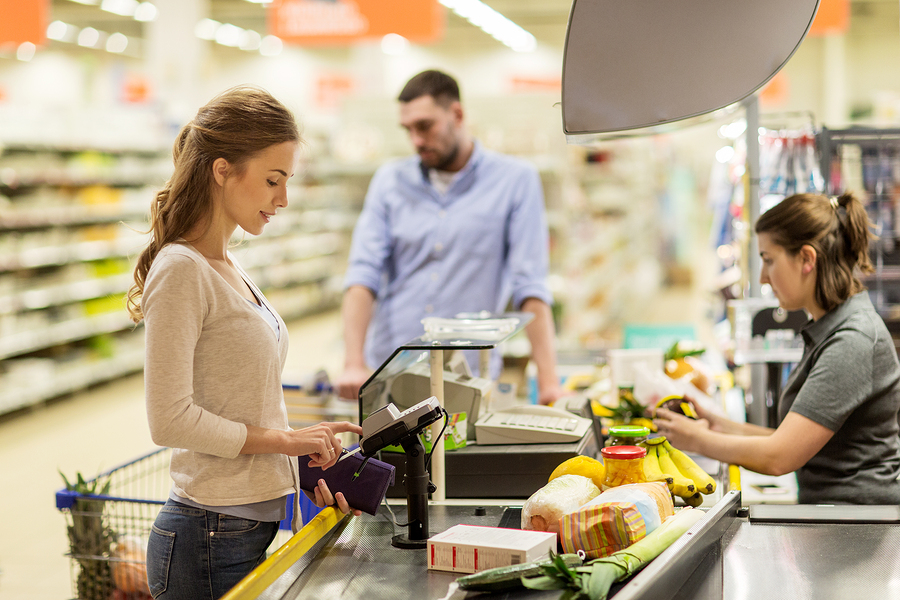
CURBSIDE PICKUP
VIPER THOUGHT LEADERSHIP #5
By Matthew Gutermuth, D.G. Hague and Monica Woo
Five minute read
For omni-channel retailers, curbside pickup of online orders, like direct delivery, is a mandatory service to address the consumers’ shift to online shopping during and post COVID-19. Based on a VIPER survey of shoppers using Curbside Pickup at different grocery chains across the U.S.: the fulfillment accuracy ranges from 60% to 85%. As COVID-19 continues to grip America, in order to rapidly start or scale Curbside Pickup and delivery, many retailers are fulfilling online orders by picking in stores, and competing with their own customers for inventory. Shoppers are frustrated by shorts, substitutions, and delays in pick-up/delivery time by days and even weeks.
VIPER CEO D.G. Hague discussed the Curbside Pickup challenges with two eCommerce C-suite trailblazers who had successfully built up online grocery businesses: Matt Gutermuth was the former CEO of Safeway.com, and current Board Chairman of GrocerKey; and Monica Woo was the former Chief Revenue Officer of FreshDirect, and President of 1-800-Flowers.com. As the former president of Safeway Corporate Perishables with $28 billion in sales, Des knows grocery fulfillment challenges first hand.
D.G. HAGUE: Matt, when we worked at Safeway together, I complained that Safeway.com’s fulfillment accuracy was only 90%. How standards have deteriorated!”
MATT GUTERMUTH: I remember achieving 95% fulfillment accuracy at Safeway.com! Picking in-store is an inefficient and unreliable way of fulfilling orders; but for most retailers, it remains the only option. For Curbside Pickup and delivery to work, retailers need dedicated space to stage the orders for customers to collect. Even when eCommerce orders are picked by the retailers’ own associates, the fulfillment rate is sub-par. There is even poorer performance with the third-party services, such as Instacart and Shipt, who hire gig workers to both pick and deliver.
MONICA WOO: Matt, you’re so right. Dedicated space and an effective process for fulfilling online orders is essential. It’s even more challenging for perishables products, which need to be staged in a space with the right temperature control. That is why retailers like Kroger build automated fulfillment sheds. Since the pandemic, many retailers’ labor and SG&A expenses have skyrocketed to fund higher hour rate for associates and safety measures. It is critical to maximize productivity per picker and per order.
MG: Many grocers reliant on in-store fulfillment do not have adequate information about what is in stock when a customer places an order. That problem is especially acute now, as grocers strive to meet demand while struggling with supply chain and labor absentee challenges.
MW: In their scenario planning, many grocery retailers are assuming 30% or more labor absenteeism. Whether it is creating fulfillment store space and micro-fulfillment sheds, or converting underperforming real estate to a dark store operation, retailers must be guided by smart data on two fronts: 1) Forecast demand by store locations, physical and digital channels, customer segments, seasonality, SKUs and marketing campaigns. Then link demand projections to inventory management. 2) Track productivity by picker, and by order.
MG: Having been in the trenches successfully growing an omni-channel grocery business, I know how daunting it is to establish a scaled data infrastructure, integrate information from multiple sources and generate smart analytics to guide decisions. I recommend that retailers leverage an external retail analytics leader like VIPER, which can track fulfillment accuracy of online orders by store location, picker and item.
DH: Besides our hyperlocal analytics and Machine Learning computational power, VIPER recommends practical actions to improve the productivity of under-performing associates. Our mission is to aid district and regional managers to detect workflow deficiencies and train store associates accordingly.
MW: VIPER analytics can also pinpoint the SKUs which are regularly out-of-stock or require substitutes, and improve inventory management by item. For many retailers, it takes three to four years to payout on an online customer due to incremental fulfillment and logistics costs. By eliminating inefficiencies, VIPER can improve the payout timing and lifetime value per shopper.
DH: To support retailers during these challenging times, VIPER is offering a $1 million Profit Improvement Guarantee™. We will deliver a minimum of $1 million in profit increase or pay the difference. VIPER shows you the money AND guarantees the payout!
Matthew Gutermuth is board director and Chief Operating Officer of iControl Data Solutions, as well as Chairman of the Board at GrocerKey. Previously, he was President/CEO of Safeway.com and was a member of Winn-Dixie’s executive team who achieved their turnaround (2008-2012). Matt is an advisor to the Board of VIPER EA LLC.
D.G. Hague is the CEO of VIPER EA, has served as an operating partner/advisor of several private equity firms, and board member to a number of for-profit and non-profit organizations. Des was formerly CEO & President of CenterPlate, President of IHOP and of Safeway Corporate Perishables.
Monica Woo is the CEO of WooWorks, which invests in and advises digital commerce, AI and omni-channel retail. Previously, she was President of 1-800-Flowers.com and Bacardi Global Brands, and FreshDirect’s Chief Revenue Officer. Monica is an advisor to the Board of VIPER EA LLC.



